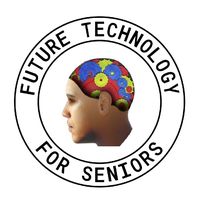Major Breakthroughs Bring Quantum Computing Much Closer
Summary
A previous blog explained quantum computing: see Quantum Basics
Since then, three major breakthroughs have occurred. They are:
- Room temperature quantum computing rather than near absolute zero (-273° C)
- Quantum data transmission through fibre optic (uses light) cable
- Chinese advanced quantum chips, 1 million times faster than Google’s best
Certain problems can be solved by quantum computers in seconds. These problems would take the world’s best supercomputers thousands of years. With the 3rd breakthrough above, maybe billions of years!
It seems Super Intelligent AI (SAI) will be complementary rather than out performing quantum computing. See more detail below.
The video below indicates the huge potential and research going into quantum computing but doesn’t include the 3 latest breakthroughs. The speaker is an English professor with a PhD in mathematics. Impressive.
AI and Quantum Computing’s Distinct Roles
AI’s Strengths
- AI is great at recognising patterns and analysing data.
- It’s revolutionising recognising images, processing language and predicting the future from all stored past data.
- It thrives on large sets of data and continuously learns and adapts.
- AI runs on standard computers.
Quantum Computing’s Strengths
- Quantum computers use quantum mechanics to perform calculations that are impossible for existing computers.
- They will solve easily drug discovery, materials science, and cryptography (encryption), for example. See main functions below.
- Quantum computers will be capable of breaking current encryption techniques.
Room Temperature Quantum Computing
The need for extremely cold operating temperatures has been a major hurdle. Novel magnetic materials and light communication systems, mean quantum computers can operate at or near room temperature.
Significantly reduces the cost and complexity of quantum computing. Makes quantum computers amenable for widespread use.
Opens up possibilities for more portable and integrated quantum devices.
Quantum Data Transmission Through Fibre Optic Cable
This is crucial for building quantum networks and a “quantum internet.” It allows the transmission of quantum information reliably over long distances. This is essential for widespread quantum computing and secure communication.
Chinese Powerful Chip
A Chinese team has developed a new 105 qubit quantum processor. It solved a problem in seconds that would take the world’s best supercomputer around 6.4 billion years.
Quantum Main Applications
- Cryptography: Breaking existing encryption methods and developing new, quantum resistant ones.
- Drug Discovery and Materials Science: Simulating molecular interactions to design new drugs, catalysts, and materials with specific properties.
- Finance: Optimising investment portfolios, risk management, and fraud detection.
- Artificial Intelligence and Machine Learning: Accelerating the training of machine learning models and developing new quantum machine learning algorithms.
- Logistics and Supply Chain Optimisation: Finding optimal routes and schedules for transportation and delivery.
- Climate Modeling: Modeling complex climate systems to improve predictions and develop mitigation strategies.
- Chemical Engineering: Simulating chemical reactions to optimise industrial processes.
- Fundamental Science: Exploring quantum physics and the universe.
- Developing new advanced materials: Simulate materials at an atomic level to create new materials with properties never seen before.
References

5 Responses
Where do you see as the major area of use of quantum and AI?
John
There will be overlap, but quantum’s strength will be solving problems and providing answers to questions scientists can’t fathom.
AI, particularly ASI and AGI will rapidly take over and do the tasks in seconds that would take humans hours to process. The present concern by scientists working in the field is that AI companies at the forefront of research are more interested in making progress rather than putting in safeguards. YouTube is full of videos about this problem with many scientists resigning because of it.
Hannah Fry is an excellent science communicator. See also her book Hello World about computers also talks by her at Royal Society
This is a very succinct, yet comprehensive, overview of the remarkable developments in quantum computing. At the same time I was impressed by the straightforward writing style employed. One of your best posts!
Tony
Good to hear from you as always and thanks for your remarks.